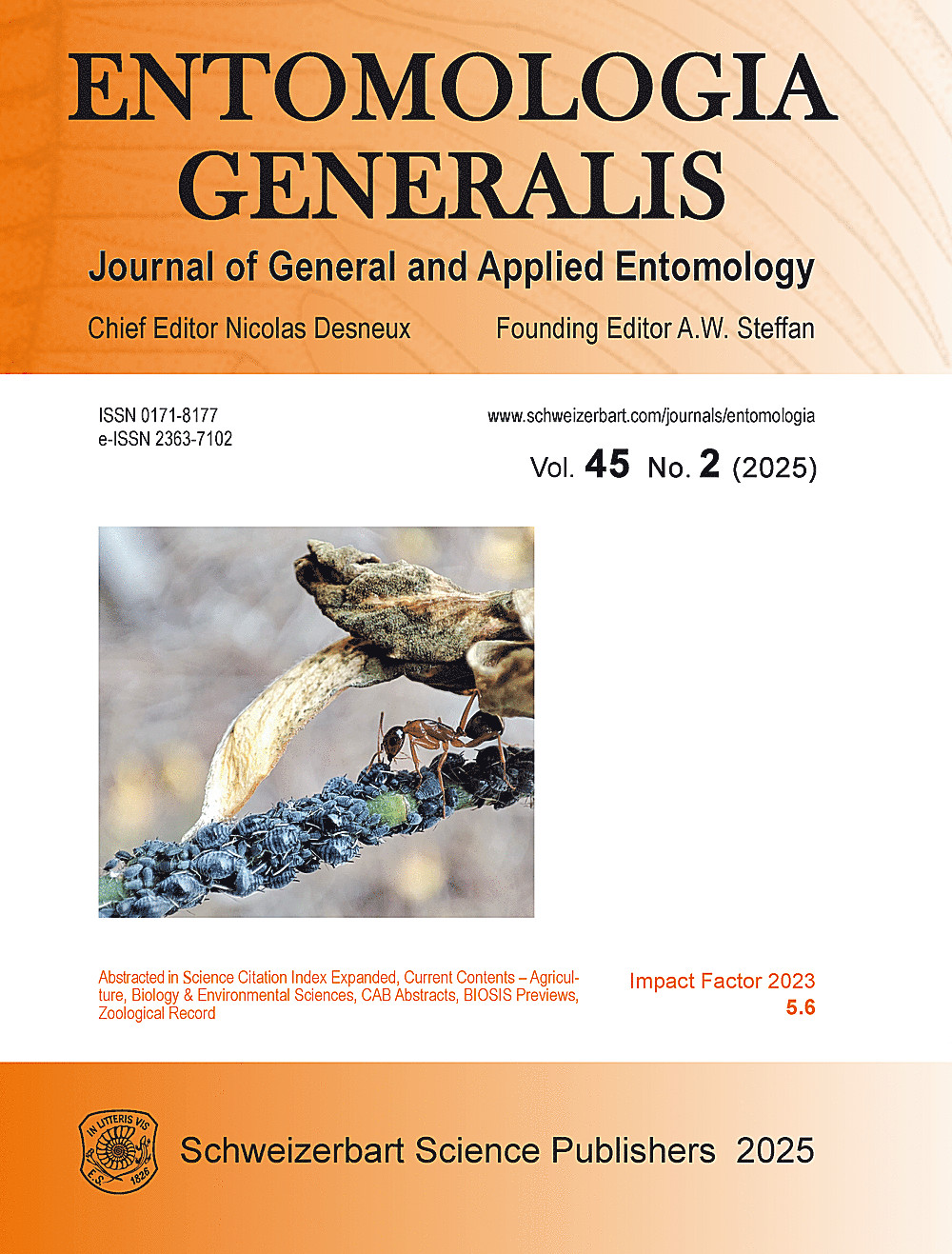Ver ítem
- xmlui.general.dspace_homeCentros Regionales y EEAsCentro Regional Patagonia NorteEEA BarilocheArtículos científicosxmlui.ArtifactBrowser.ItemViewer.trail
- Inicio
- Centros Regionales y EEAs
- Centro Regional Patagonia Norte
- EEA Bariloche
- Artículos científicos
- Ver ítem
Mating before host colonization: a common trait in outbreeding Scolytinae, potentially linked to invasiveness
Resumen
Little is known about the influence of mating strategies that could potentially facilitate the colonization of new hosts in outbreeding species of the weevil subfamily Scolytinae. Individuals typically emerge from their host tree, disperse, and then mate with unrelated conspecifics in a new host where the females establish maternal galleries. Yet, in several species commonly classified as outbreeding, females have been found already mated before host
[ver mas...]
Little is known about the influence of mating strategies that could potentially facilitate the colonization of new hosts in outbreeding species of the weevil subfamily Scolytinae. Individuals typically emerge from their host tree, disperse, and then mate with unrelated conspecifics in a new host where the females establish maternal galleries. Yet, in several species commonly classified as outbreeding, females have been found already mated before host colonization. Precolonization mating provides female with a sperm supply before they find a new host and allows them to establish a maternal gallery on their own. We compared the proportion of females mated before host colonization across 18 European and four American outbreeding Scolytinae species using a phylogenetically controlled analysis. To this end, we determined whether females caught in the spring had sperm in their spermathecae. We found that a proportion of females (range: 16–100%) mated before host colonization in all 22 species. Moreover, this trait was biased, although not significantly, toward invasiveness. Species known to have established outside their native range (Scolytinae with an Invasion History – SIH) displayed a higher proportion of females mated before host colonization than did species restricted to their native range (non-SIH). In Hylurgus ligniperda (Fabricius), a Palearctic species currently present across the globe, the proportions of females mated before host colonization reach 90% in the species’ native range and up to 99% in its nonnative range (Argentina and New Zealand). Overall, these results show that precolonization mating is widespread among the Scolytinae. This trait could enhance the invasive capacities of outbreeding species by allowing females to establish a maternal gallery independently of any male during colonization, thus facilitating the establishment and spread of species introduced in new geographical areas.
[Cerrar]

Autor
Dacquin, Pauline;
Barnes, Brittany F.;
Caiti, Emilio;
Corley, Juan Carlos;
Deganutti, Luca;
Faccoli, Massimo;
Gandhi, Kamal J.K.;
Garcia, André;
Grodzki, Wojciech;
Jactel, Hervé;
Inward, Daegan;
Knížek, Miloš;
Lantschner, Maria Victoria;
Lakatos, Ferenc;
de Pletincx, Nathan Lecocq;
Meurisse, Nicolas;
Nikolov, Christo;
Pugh, Andrew;
Riggins, John J.;
Aron, Serge;
Grégoire, Jean-Claude;
Fuente
Entomologia Generalis 45 (2) : 391-399. (April 2025)
Fecha
2025-04
Editorial
Schweizerbart Science Publishing
ISSN
0171-8177
2363-7102
2363-7102
Formato
pdf
Tipo de documento
artículo
Palabras Claves
Derechos de acceso
Abierto
 Excepto donde se diga explicitamente, este item se publica bajo la siguiente descripción: Creative Commons Attribution-NonCommercial-ShareAlike 2.5 Unported (CC BY-NC-SA 2.5)
Excepto donde se diga explicitamente, este item se publica bajo la siguiente descripción: Creative Commons Attribution-NonCommercial-ShareAlike 2.5 Unported (CC BY-NC-SA 2.5)


